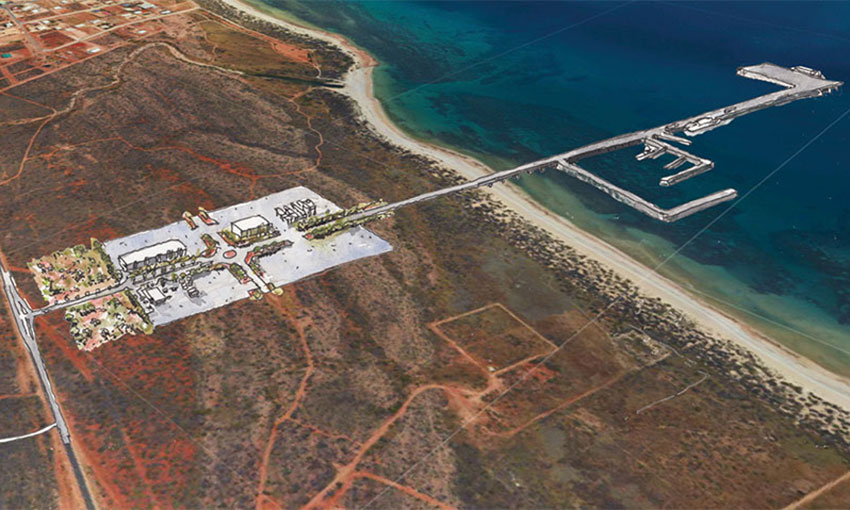THE Western Australian Environmental Protection Agency announced that it is subjecting the Gascoyne Gateway port project to the highest possible level of assessment.
The proposed project includes a multi-use single jetty and shore-side infrastructure. The 3.8-square-kilometre site is about 10 kilometres south of Exmouth and aims to cater to existing marine traffic in the Exmouth Gulf, including tourist and navy vessels.
The proposed project includes a renewables precinct, desalination infrastructure and fuel storage.
The EPA noted in its decision to assess the project that it could include clearing of up to 259 hectares of native vegetation and animal habitat. The project, it said, could also have impacts to social surroundings from “noise, visual, amenity and to heritage values”. And the EPA said the project could entail the loss of habitat for marine animals.
The company behind the project, Gascoyne Gateway, welcomed the opportunity to put the environmental credentials of its proposed single jetty deep-water port to the ultimate test.
The EPA assessment, the company said, will entail a technical report and peer review, which will be subject to a public comment process.
Gascoyne Gateway managing director Michael Edwards said this was a chance to demonstrate its commitment to environmental management.
“We are committed to setting a new benchmark in marine environmental management worldwide by creating Australia’s first green port and this level of assessment will help us achieve that,” he said.
“Some time ago we started a number of environmental studies that would support the EPA assessment process, including marine habitat surveys, shoreline movement assessments, coastal processes assessment and flora and fauna baseline surveys. This proposal is backed by the best science, and we are confident that it will hold up to the closest possible scrutiny.”
Gascoyne Gateway said it has hired the former executive chair of the EPA, Ray Steedman, as an environmental consultant on the project.
Mr Edwards said several regeneration initiatives had been incorporated into the initial design of the project to help improve environmental outcomes in the Exmouth Gulf.
“We plan to use renewable energy to power the port, by doing our part in achieving a net zero carbon target, we are ultimately contributing positively to the effects of climate change,” he said.
“We will avoid extracting water from the local aquifers by creating our own desalinated water, potentially producing drinkable water to support the local community and reducing existing impacts on subterranean fauna.”
Mr Edwards said the port would also establish proper management of vessel movement in the gulf, which was currently unregulated, and reduce marine traffic impact on the Exmouth Gulf.
“There is currently very limited organisation or oversight of the movement of ships and maritime activities in the gulf,” he said.
“It’s expected that much of the existing traffic within the gulf will use our facility, making it immediately viable and delivering a net environmental benefit as this traffic becomes better regulated.
“The project will also enable marine habitat that has already been damaged by ship’s anchors to be restored by regulating anchoring in allocated areas of the gulf.”
The company said several of the scientific studies required by the EPA to assess the project at the highest level have already commenced.

